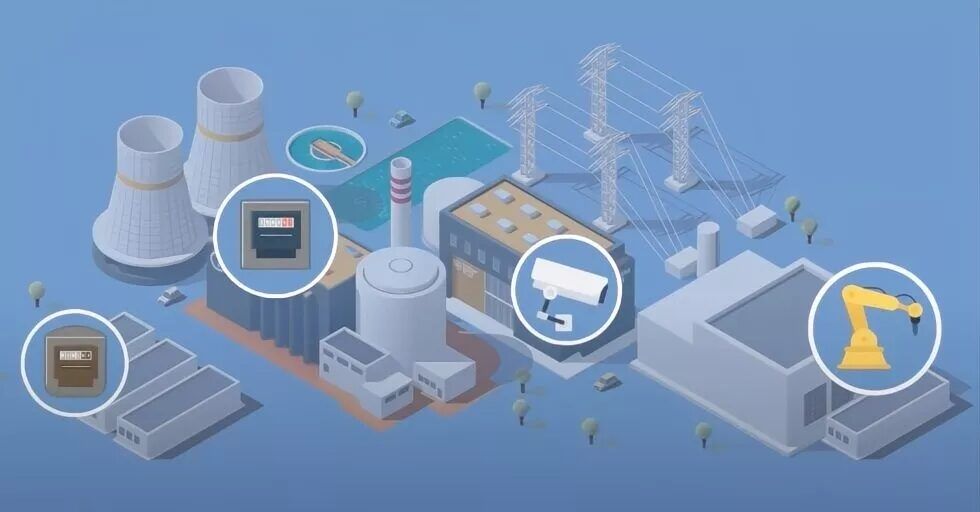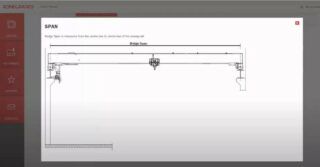The future of our world will be completely electrified, decarbonized, and above all, fully digitized.
Energy management in industrial plants is a topic that always sparks discussion and will continue to do so in the future. For those who have not yet begun to think about it or for those who have already decided to invest in this ongoing process, we hope that this content will bring the topic closer and provide much food for thought.
The article will take a closer look at energy management, what it entails, what the ISO 50001 standard is, what the KIO platform is, and finally how to implement energy management in a manufacturing facility.
What exactly is energy management in a business?
Energy management in an industrial enterprise is a highly complex issue, involving:
- Technology: implementing modern energy consumption monitoring and control systems, upgrading installations and equipment for energy efficiency
- Processes: optimizing procedures and work schedules, implementing best practices, and educating employees on efficient energy use
- Leadership skills: engaging management in building a culture of effective energy management and creating long-term strategies
These are actions aimed at improving the energy efficiency of the enterprise, which leads to reducing energy costs and decreasing greenhouse gas emissions into the atmosphere. Taking these actions is considered crucial because buildings are responsible for one-third of the world’s total energy consumption.
Take natural gas as an example. Since 2017, the emissions trading system has been in place, meaning we pay an additional fee for all our fossil fuels. This means that even though natural gas remains the most efficient and cheapest commodity in emissions trading worldwide, we still have to pay an additional fee. We can use it, but we bear the risk of exposure to rising emission costs.
These costs are driven by market conditions, which in turn depend on currency fluctuations and how expensive fuel becomes, or how much the government wants to charge us for it. If we simply continue to do what we have been doing for years, we will be exposed to rising emissions costs.
So what can we do about it?
One way is to implement solutions that help us reduce the cost of emissions. Electricity alone is not always the best choice for powering a manufacturing plant, unless you are prepared to invest in combined heat and power or some other approach to power generation. Replacing all equipment with electricity within a few months would be quite a challenge. In this case, energy efficiency is the best tool for solving problems related to bearing the cost of emissions.
We can argue and discuss this topic many times over, but it has been proven in many publications worldwide that energy efficiency is truly the cheapest option for reducing energy consumption from various sources. And most importantly, it doesn’t have to be achieved only by installing completely new equipment. It can also be achieved by using what we already have more intelligently and efficiently. And that should be our goal, at least at the beginning of the journey.
Monitoring organizations with the help of IoT tools
Transparent operations involve providing relevant information to all those who may need it, wherever it may be needed. Energy management definitely fits into this approach. But let’s be honest. How many of you know how much energy a plant really needs? How much energy flows through your organisation? Where is it actually being used? And what role does digitalisation play in all this?
There are many benefits to be gained from energy efficiency management. Production areas are just waiting to be optimised and improved.
To illustrate this further, let’s look at an area that is really very close to us – the household area. Many of you buy new household appliances. What do you look for? You look at the energy label on these appliances. This is a good indicator of how much energy our future appliance will use and how much we will pay to use it, knowing its energy requirements.
Back to the production area. Throughout the production environment we find many machines that do not have such an energy label. If all machines had such labels, the world would be a much simpler place. Unfortunately, production machines are much more complicated than household appliances.
This is where automation comes in, along with sensors and IoT systems that give us insight into this “energy information”.
The Internet of Things is a structure that allows all the devices around you to communicate with each other via the Internet. This structure enables communication between devices, literally making them talk to each other, collaborate with users and even develop their own decision-making mechanisms. Industry 4.0 integrates the IoT ecosystem with data analytics, robotics and artificial intelligence to create cyber-physical systems for industry.
KIO – IoT platform for energy management
An example of an energy management solution for the production ecosystem is Klemsan’s KIO platform, which is based on connected devices and sensors throughout the production plant ecosystem that communicate and collaborate with each other.
The solution collects data from all connected devices and maintains data logs. It also provides fast access to historical data through advanced database features. A huge advantage of the system is that it is compatible with all brands of devices in automation. No infrastructure changes are needed to start using it. In this case, we reduce costs at the first stage – the stage of infrastructure construction. Furthermore, the KIO platform is scalable.
The platform is a useful energy management tool for small users with just one energy metering point, as well as for industrial users with tens, hundreds and thousands of distributed metering points.
In the past, machines and assembly lines were monitored physically. Today, technology does the job for us, continuously monitoring equipment and alerting us via email or SMS in the event of alarms, minimising production downtime.
Sensors connected to the system can detect unusual changes or differences between two measuring points and prevent losses and leaks (the number of communicating devices is infinite, and the load shared by a single server supports over 2000 devices).
The platform itself is based on the WEB network, so we have access to analysis and data through a browser from any device (phone, tablet, computer). Data can be stored on a cloud server or on the client’s server. The third solution is KioBox, an industrial computer with the KIO system installed and an internal server.
What can we monitor in real-time
The KIO platform allows us to monitor all data from metered objects. There are no limits to the type and quantity of parameters that can be read. We can read parameters of consumed electrical energy, as well as gas, water and many analogue parameters from sensors: temperature, pressure or vibration.
We can monitor energy efficiency, calculate unit costs, and make comparisons based on the entire organization, groups of devices, or individual devices.
We have an advanced reporting module. We can configure reports, create budgets and perform analysis.
Reports are generated based on the current parameters of the monitored devices, but we can also perform comparative analysis of specific time periods. This allows us to identify peak loads and excessive energy consumption, so that we can take effective action to minimise the impact on the electricity network and avoid costly peak tariffs.
The readings can also be converted into the currency of our choice and financial reports can be generated.
KIO can schedule maintenance when it detects potential faults, preventing unexpected events in production. It monitors and records many different parameters to better analyse return on investment: electricity, gas and water meter readings. It is a single solution for all energy management needs.
It allows us to monitor energy efficiency, calculate unit costs, pinpoint equipment from different locations on a map and make comparisons based on organisations, equipment or groups of equipment. The platform also allows such analysis to be extended to data from existing SCADA and BMS systems.
We can control all installation points using an energy metering plan and support the environmental management system by calculating CO2 and TEP emissions. We can also check the status of energy consumption using energy performance indicators.
The system also helps to implement the ISO 50001 energy standard. It supports the statistics and reports required by this standard and by environmental protection.
What is the ISO 50001 standard?
ISO 50001 is an international standard that specifies the requirements for an organisation’s energy management system (EnMS). Implementing an EnMS based on ISO 50001 helps companies to systematically strive for continuous improvement in energy performance.
Key benefits of implementing the ISO 50001 standard:
- Cost savings: Reducing energy consumption translates into direct financial savings
- CO2 emissions reduction: Efficient energy management contributes to environmental protection
- Increased competitiveness: Holding an ISO 50001 certificate can be perceived as a quality and responsibility indicator for a company, which can build trust among customers and partners
- Increased energy awareness: Implementing an EnMS engages employees in energy saving and encourages behavior change
- Better risk management: Identification and control of risk factors related to energy supply and prices
- Compliance with legal requirements: The ISO 50001 standard incorporates current regulations and directives regarding energy efficiency
Key requirements of the ISO 50001 standard:
- Energy policy: Establishing objectives and commitments of the organization regarding energy efficiency
- Energy planning: Identifying and analyzing significant energy consumption aspects and developing action plans to improve efficiency
- Implementation and operation: Implementing and maintaining the EnMS throughout the organization
- Measurement, monitoring, and analysis: Regular monitoring of energy consumption and analysis of efficiency indicators
- Management review: Regular assessments of the EnMS by the organization’s management
- Continuous improvement: Striving for continuous improvement of the EnMS and energy performance
ISO 50001 Certification
Implementing and certifying an EnMS to ISO 50001 is not mandatory, but it can bring many benefits. The certificate confirms that the company meets international standards in energy management, which can be an additional advantage when dealing with customers and partners.
How to implement energy management in a manufacturing plant
When a company embarks on energy management initiatives, saving energy should be the primary objective among many others. This approach requires investment and commitment. It is important to be aware that the effects are usually only visible in the longer term.
It should be emphasised that the best way to introduce energy management into the corporate culture is to do so for all the utilities used by the company, not just one
The message to employees, who will ultimately be responsible for implementing the energy management platform, will be much easier if we say that it is important to save not only gas, but also electricity and water. Otherwise, the psychological message to employees will be much more difficult if we only focus on saving one medium.
Energy management has enormous potential to be a great tool for an organisation seeking to improve energy use efficiency, but it must be implemented with a specific goal in mind from the outset. We also need to be aware of the size of the overall investment and that building an energy management system is an ongoing process.
A common mistake made by many companies is to focus only on installing an information energy management system, such as meters. They think that this will solve most of the existing problems. However, such implementations only show us that they exist, but cannot solve them on their own.
Savings come from the actions we take based on the information we get from systems like the KIO mentioned above. Without action, there are no savings. No matter how advanced our system is, people need to start thinking in terms of savings.
Lean as the essence of goal achievement
Making energy visible is a key element in the whole process. Without measurement, we cannot manage it effectively. Energy management is not just a tool that we buy and use in a certain way. It is much more than installing meters and analysing data.
Management involvement is a very important factor, because their active participation sends a message: Yes, we think this is important. In addition, high employee awareness can be important when communicating energy management initiatives and trying to get suggestions for improvement.
Once this is achieved, we need to build a team to lead these changes. Once the team is in place, it needs to define its objectives. We need to have in mind certain long-term targets for reducing energy consumption. It is best if these are well defined. Once we have done this, we are on the lean journey and in the continuous improvement phase of the energy management programme.
Introduce an energy management culture
The energy management culture in an organisation is shaped by many factors. On the one hand, management plays a major role in defining energy policy and setting energy consumption targets. On the other hand, the overall energy behaviour of the workforce, involving many individuals with different lifestyles, values and specific cultural factors, determines the direction in which the energy culture develops.
One of the key principles is to have the support of senior management to introduce an energy management culture in our company. The more support we get, the greater the savings we will achieve in the project. The team needs to be aware of energy issues. It is this team that will determine the direction of the development of the energy culture in the company.
In some cases, the energy behaviour of employees can lead to excessive energy consumption, even when efficient technology is used. It is worth recognising that employees do not always behave in the best way, or even in line with their own values, when it comes to energy issues in the workplace. Therefore, the introduction of rules should play an important role in guiding energy-saving behaviour and involving employees in strengthening a common energy culture in the company.
Energy management also affects many important factors in the company that are part of doing business. Operating costs are one of the most important. Managing them can lead to other benefits, such as competitive pricing in the marketplace.
Energy is unique in that reducing energy consumption reduces the factory’s carbon footprint. Put simply, we improve our public image and increase the value of the business in the eyes of our customers.
Energy Goals
Energy management is a tool that enables energy efficiency
The goals in the company’s energy policy should be updated over time. The energy market is constantly evolving, and new technologies and regulations may impact the company’s capabilities and needs. A good idea is to start with achievable goals from the beginning, and then gradually increase them. It is also important for the goals to be:
- Specific: Clearly defined and easy to understand
- Measurable: Possible to measure and monitor progress
- Achievable: Realistic to accomplish with available resources
- Realistic: Adapted to the capabilities and needs of the company so that people do not give up if they see it as beyond their reach
- Time-bound: Having a specified deadline for achievement
For example:
- Implementation of an energy consumption monitoring system by the end of the year
- 10% reduction in energy consumption within a year
- Increase the share of renewable energy in energy consumption by 20% within two years
Summary
Major manufacturers have long realized that energy management is a key issue to remain competitive in the industrial market, and digitization has become an essential element of every company’s energy strategy.
Digitized energy management is currently one of the main assumptions of any system.
Even installing five meters will provide enough information to start actions that can lead to energy savings.
However, we must be aware that energy management alone does not save anything. It is a pathway enabling the management of this process, which, through digital systems providing detailed information on media consumption at various points of the company, identifies potential problems and indicates optimization opportunities.





![Methane emissions remains elusive challenge for oil and gas industry [REPORT] Methane emissions remains elusive challenge for oil and gas industry [REPORT]](https://industryinsider.eu/wp-content/uploads/xMethane-emissions-by-source-320x167.jpg.pagespeed.ic.q-7jG2luXb.jpg)


